练习1 Exercises
朗读下列短语和句子 Read the following phrases and sentences aloud. 01-5
- 打算:打算去唱歌/打算做什么/没有打算/周末你有什么打算?
- 一直:一直写作业/一直生病/一直不高兴/你怎么一直玩儿?
- 着急:很着急/不着急/刚着急/你怎么一点儿也不着急啊?
- 跟:跟小狗玩儿/跟朋友去买东西/刚跟他旅行/你能跟我一起去吗?
- 带:带地图/带饭/没带作业/还是少带一些吧。
2 选择恰当的词语填空 Choose the proper words to fill in the blanks.
周末 带 游戏 跟 作业
- 你写完____了吗?
- 上个____我们去朋友家玩儿了。
- 别玩儿____了,快去睡觉。
- 他说好请我吃饭,但是没____钱。
- 明天我要上课,不能____你们一起去玩儿。
南方 搬 面包 地图 打算
- A: 你是什么时候____家的?我怎么不知道?
B: 上个月。 - A: 你是北方人吗?
B: 不是,我是____人。 - A: 考完试你有什么____?
B: 我还没想好。 - A: 你好,我要买一张____。
B: 三块钱。 - A: 累了吧?吃点儿____吧。
B: 好,你也吃点儿吧。
3 用本课新学的语言点和词语描述图片
Describe the pictures using the newly – learned language points and words.

A:衣服都____了吗?
B:我一____也____。
A:你什么时候洗?
B:我____今天下午洗。

A:小狗怎么没吃饭?
B:我的狗生病了,一____也____。
A:那____你的狗去医院吧。
B:好吧。
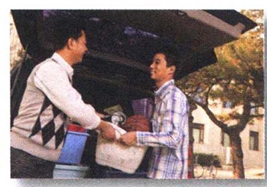
A:我们休息一下再____吧。
B:没关系,我一____。
A:那____。
B:好。
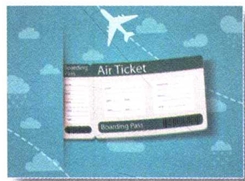
A:你什么时候回家?
B:我还没____飞机票呢,你知道在哪儿买票吗?
A:知道,我____你一起去吧。
B:太好了,谢谢。
4 根据课文回答问题 Answer the questions according to the texts.
① 周末小刚打算做什么?
② 小丽要不要跟小刚一起去?
③ 儿子在做什么?他准备好考试了吗?
④ 小丽什么时候去旅游?
⑤ 小刚觉得哪儿最好玩儿?为什么?
⑥ 小刚和小丽带了什么东西?
汉字 Characters
1 汉字知识 Character Note
指事字 Self – Explanatory Characters
古代中国人创造汉字的时候,有一些抽象的事物不能用具体的形象画出来,所以就用抽象的符号表示。例如:
When people in ancient times were creating Chinese characters, they used abstract signs to signify the abstract things which could not be expressed by specific images. For example:
| 汉字 Character | 图片 Picture | 汉字的意思 Meaning |
|---|---|---|
| 一 | 一 | 数字“一”。 The Numeral “one”. |
| 二 | 二 | 数字“二”。 The Numeral “two”. |
| 三 | 三 | 数字“三”。 The Numeral “three”. |
| 上 | 
|
在地平线上边。 Above the horizon. |
| 下 | 
|
在地平线下边。 Below the horizon. |
| 本 | 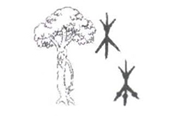 |
在“木”字下边加一点,意思是树根。 A dot is added at the lower part of “木” to indicate the root of a tree. |
| 末 | 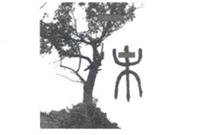 |
在“木”字上边加一点,意思是树梢。 A dot is added at the upper part of “木” to indicate the tip of a tree. |
2 旧字新词 Word Game
读读下面的词语,想想组成的新词是什么意思。
Read the following words and guess the meanings of the newly – formed ones.
旅游——客人=游客 外边——地方=外地 北方——门=北门
运用 Application
1 双人活动 Pair Work
两人一组对话,用 “…… 也都 + 不 / 没……” 互相反驳。例如:
Work in pairs to make dialogues, contradicting each other using “…… 也都 + 不 / 没……”.
For example:
例如:A: 我觉得今天很冷。
B: 我觉得一点儿也不冷。我想吃一个苹果。
A: 我一个苹果也不想吃。
提示词:
- 买衣服 爬山 上网 着急 远 忙
2 小组活动 Group Work
3 – 4 人一组,讨论打算去哪儿旅游,怎么去,旅游以前要准备什么。每组请一位同学记录,并向全班报告。
Work in groups of 3 – 4. Discuss where you are planning to go traveling, how you will go, and what should be prepared before the trip. Ask one member to take notes and report the results to the whole class.

| 打算去哪儿旅游 | 怎么去 | 旅游以前要准备什么 | |
|---|---|---|---|
| 1 | 打算去北京旅游 | 坐飞机 | 买好飞机票、找好宾馆 |

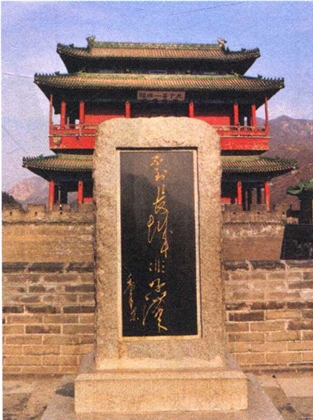

Comments